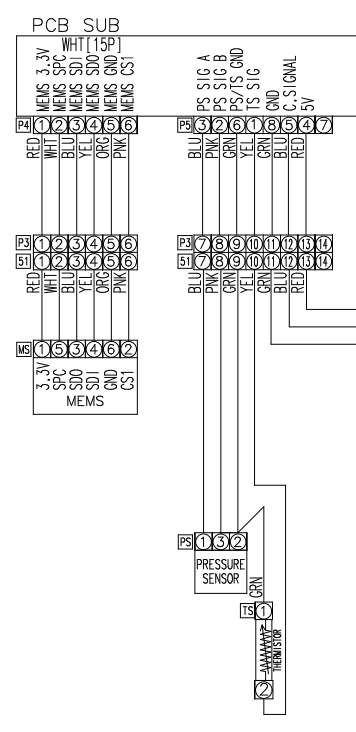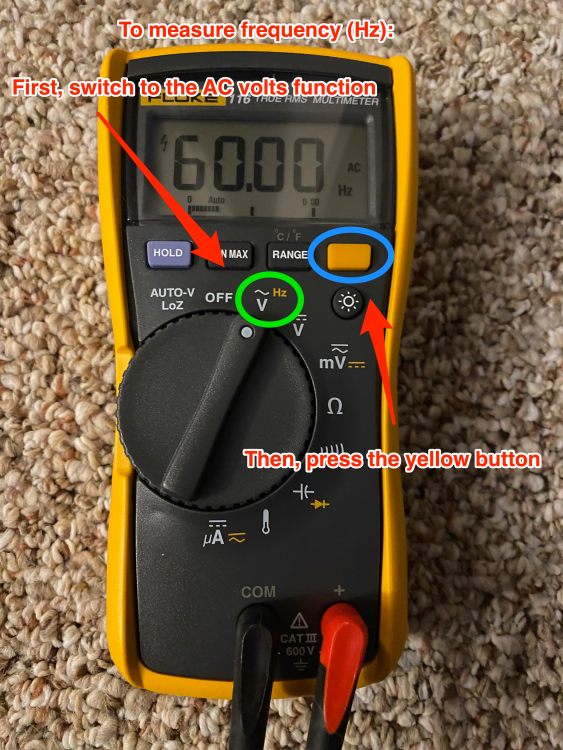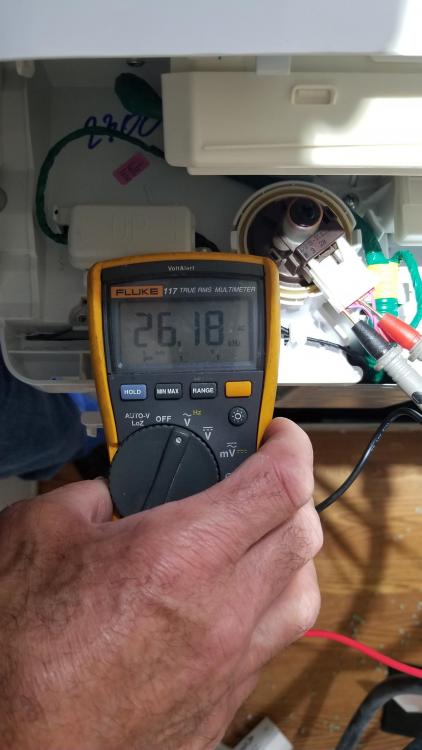Using Frequency Measurements as a Troubleshooting Tool
Here's our scenario: you're working on a Samsung WA50K8600AW washer that won't advance in the cycle. Error codes and test modes aren't telling you anything useful, and the control doesn't even seem to be trying to advance the cycle. You've checked the air tube connected to the pressure sensor, too, and everything is clear there.
What can you do here? Do you just call it a bad board and move on?
Let's see if there's a smarter test we can do on this one. What if we could test the signal that the pressure sensor is sending back to the board? Well, let's look at the schematic.

Not too helpful. Sure, we can see that one of the wires connected to the pressure sensor is a ground wire and the other two are signal wires. But if we measure across those two signal wires, what would we expect to see? The schematic doesn't tell us.
But maybe somewhere else in the manual does...

Aha! There we have it -- the all-important spec. But here's the catch: it's not a voltage or resistance spec, like what we're used to measuring for. This pressure sensor communicates with the board via a frequency signal.
I don't know about you, but I don't measure frequency very often. But that doesn't mean there aren't ways to measure it! In fact, a lot of multimeters, such as my Fluke 116, are perfectly capable of doing a frequency measurement.
Here's a pic of my meter while I have both leads in a wall outlet. You can see it's showing a solid 60 Hz, as you would expect for a normal household power supply.
It's that easy -- if your frequency measurement on the pressure sensor is out of spec, then you know you've found your problem. Here's a picture of actually taking the measurement:
Want to learn more about making measurements with your meter and interpreting the results? Click below to watch a webinar recording on exactly that -- available only to premium members.
-
.png) 5
5
-
 2
2

.png.aa21533c6656a1cb054a172848652cb2.png)





4 Comments
Recommended Comments